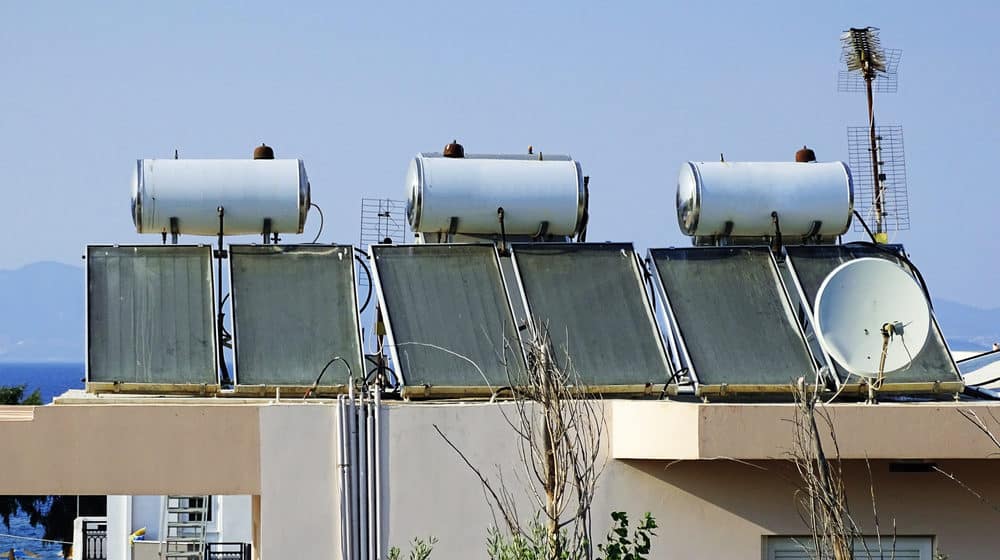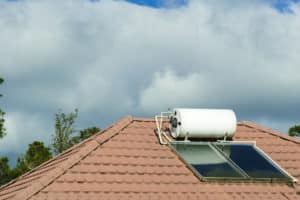
Are you tired of paying high energy bills every month? Have you considered switching to solar power? Solar energy is a clean and renewable source of energy that can save you money in the long run. One way to take advantage of solar power is by installing a solar water heater in your home.
Texas is known for its abundant sunshine, making it an ideal location for solar energy. Solar City TX is a leading provider of residential solar water heater service in Texas, helping homeowners save money and reduce their carbon footprint.
Continue reading to delve deeper into this topic.

From capturing solar energy to heating water for your home, we’ll uncover the process and benefits of a residential solar water heater. Get ready to discover how this innovative system harnesses the power of the sun to provide efficient and sustainable hot water solutions.
The collector is the part of the system that absorbs the sun’s energy. It is usually mounted on the roof of the house and consists of a flat plate or evacuated tube. The flat plate collector is made up of a dark-colored metal plate that absorbs the sun’s energy and transfers it to a series of tubes that run through the plate.
The evacuated tube collector consists of a series of glass tubes that are evacuated of air and contain a heat-absorbing material. Both types of collectors work by absorbing the sun’s energy and transferring it to a fluid that circulates through the system.
The storage tank is where the hot water is stored until it is needed. It is usually located inside the house and can be a conventional water heater or a specially designed tank that is optimized for solar heating.
The tank is insulated to prevent heat loss and equipped with a backup heating element for insufficient solar energy.
The circulation system is responsible for moving the fluid through the system. It consists of a pump, a control valve, and a series of pipes.
The pump circulates the fluid from the collector to the storage tank, and the control valve regulates the flow of fluid to ensure that the water is heated to the desired temperature. The pipes connect the collector, the storage tank, and the pump.
When the sun shines on the collector, the fluid in the collector absorbs the sun’s energy and becomes hot. The pump circulates the hot fluid to the storage tank, where it heats the water. As hot water is used in the house, cold water enters the tank and is heated by the hot water already in the tank.
If there is not enough solar energy to heat the water to the desired temperature, the backup heating element kicks in and heats the water to the desired temperature.
Exploring the cost of installing a solar water heater? This concise guide highlights the key factors influencing installation costs. Discover how system size, location, incentives and more impact the financial aspects of this sustainable and efficient solution.
There are two main types of solar water heaters: passive and active. Passive systems are less expensive than active systems because they don’t require any mechanical or electrical components. Active systems, on the other hand, use pumps and controllers to circulate water through the system, which can increase the installation cost.
The size of the solar water heater you need depends on the number of people in your household and your hot water usage. Larger systems are more expensive than smaller ones because they require more materials and installation time.
The location of your home can also affect the installation cost of a solar water heater. If your home is in an area with plenty of sunlight, the installation cost may be lower because less equipment is needed.
If your house receives limited sunlight, you might require extra equipment, such as a backup heating system, and it can add to the installation cost.
The type and condition of your roof can also impact the installation cost of a solar water heater. If your roof is flat and easy to access, the installation cost may be lower.
However, if your roof is sloped or in poor condition, additional work may be required to install the system, which can increase the installation cost.
The cost of labor can vary depending on the experience and expertise of the installer. It’s important to choose a reputable installer who has experience installing solar water heaters to ensure that the system is installed correctly and efficiently.
There are often incentives and rebates available for homeowners who install solar water heaters. These incentives can help offset the installation cost and make the system more affordable.

Flat plate solar water heaters are the most common type of solar water heater. They consist of a flat, rectangular box with a dark absorber plate inside.
The plate absorbs energy from the sun and transfers it to the water in the tank. These heaters are relatively easy to install and maintain, making them a popular choice for homeowners.
Evacuated tube solar water heaters are another popular type of solar water heater. They consist of a series of glass tubes that are connected to a manifold.
The tubes are designed to trap sunlight and convert it into heat, which is then transferred to the water in the tank. These heaters are highly efficient and can work even in low-light conditions.
Integral collector storage solar water heaters are also known as batch heaters. They consist of a tank that is connected to a flat, rectangular collector.
The collector is designed to absorb energy from the sun and transfer it to the water in the tank. These heaters are relatively inexpensive and easy to install, making them a good choice for homeowners on a budget.
Thermosyphon solar water heaters are a type of passive solar water heater. They consist of a tank that is located above the collector.
The water in the collector is heated by the sun and rises up into the tank, creating a natural circulation loop. These heaters are highly efficient and require no electricity to operate.
Pumped solar water heaters are a type of active solar water heater. They use a pump to circulate water between the collector and the tank.
These heaters are highly efficient and can work even in low-light conditions. However, they require electricity to operate and are more complex to install than passive solar water heaters.
At Solar City TX, we are your trusted partner for residential solar water heater solutions in Texas. With years of experience and a commitment to quality, we have built a strong reputation in the industry. Here’s why you can trust us:
When it comes to residential solar water heaters in Texas, trust Solar City TX for reliable, efficient, and sustainable solutions. Contact us today to explore how we can help you harness the power of the sun for your hot water needs.